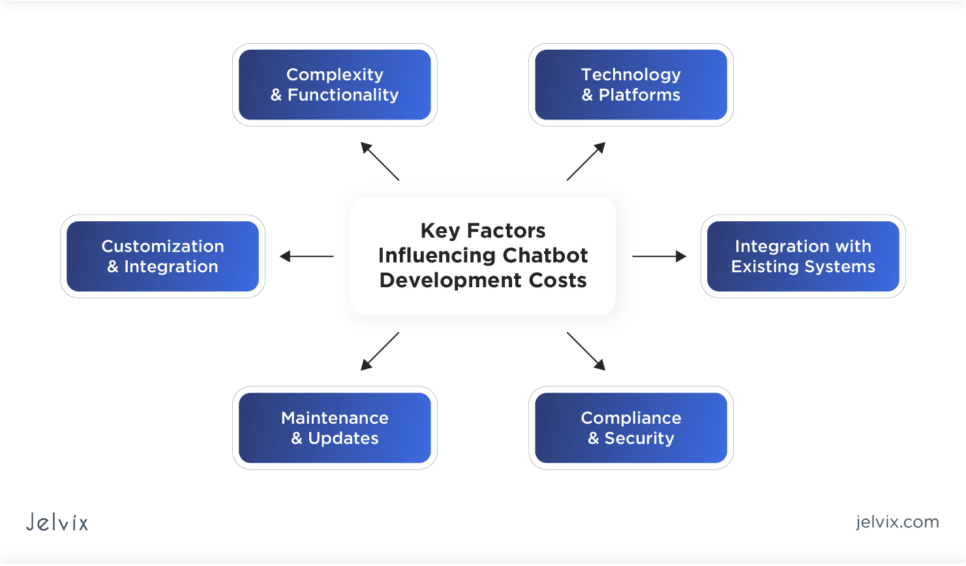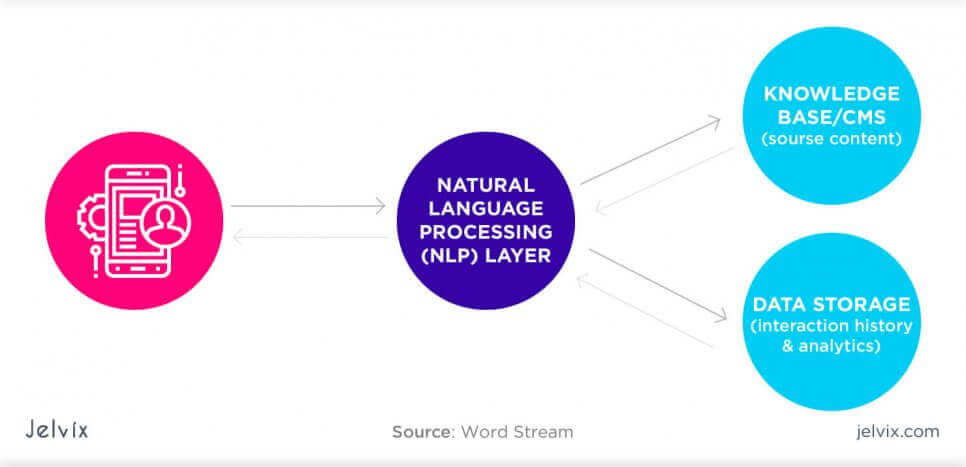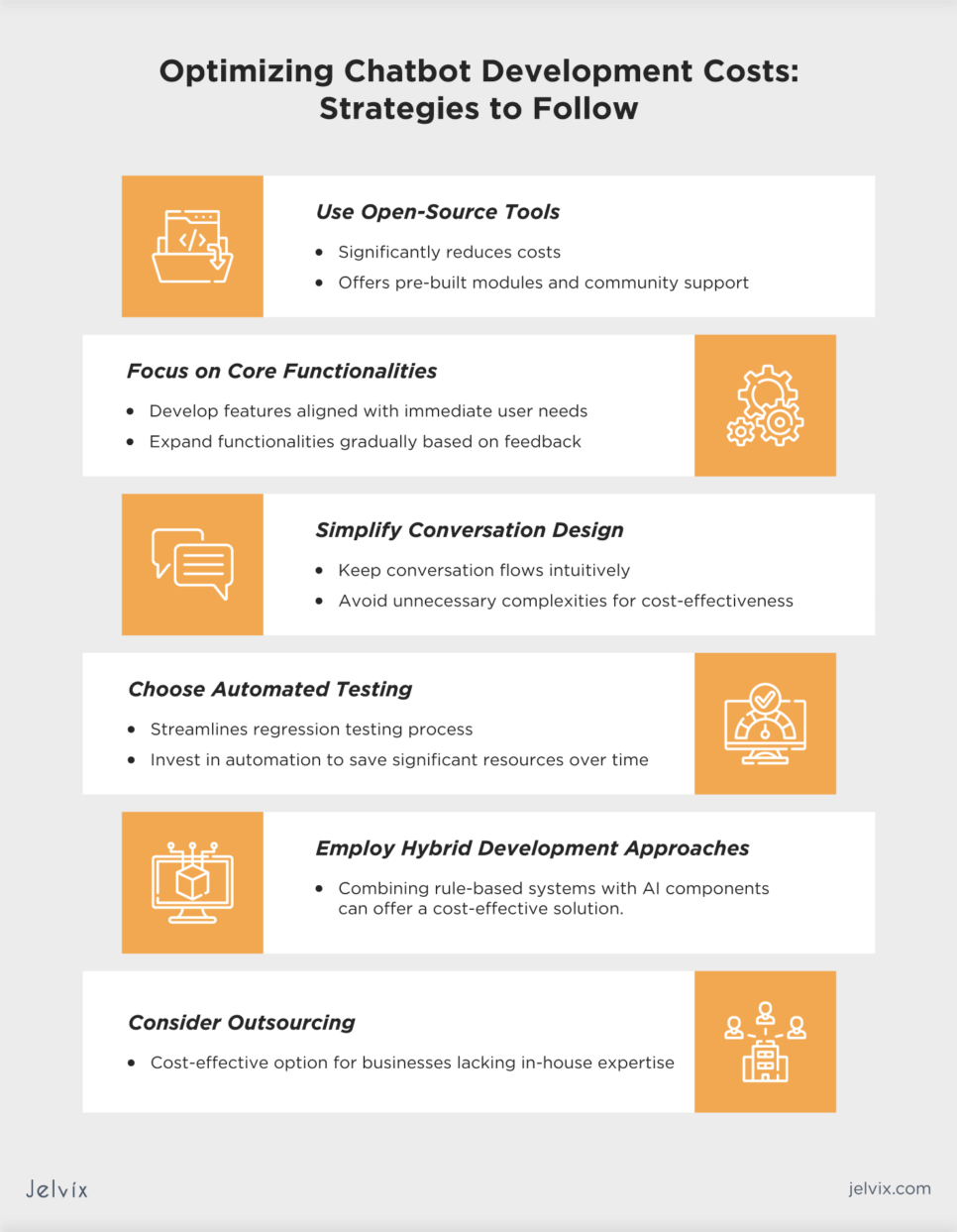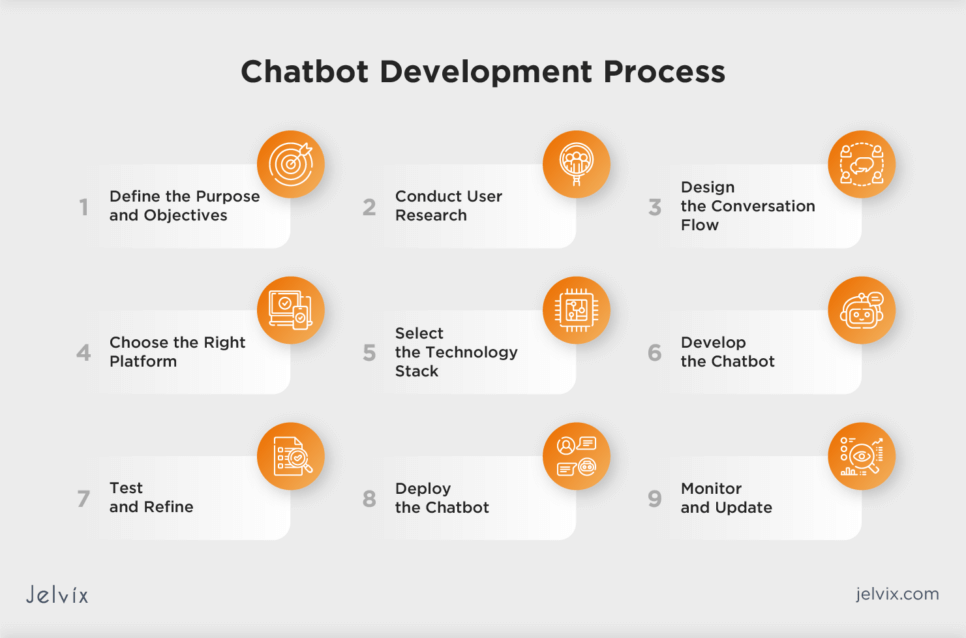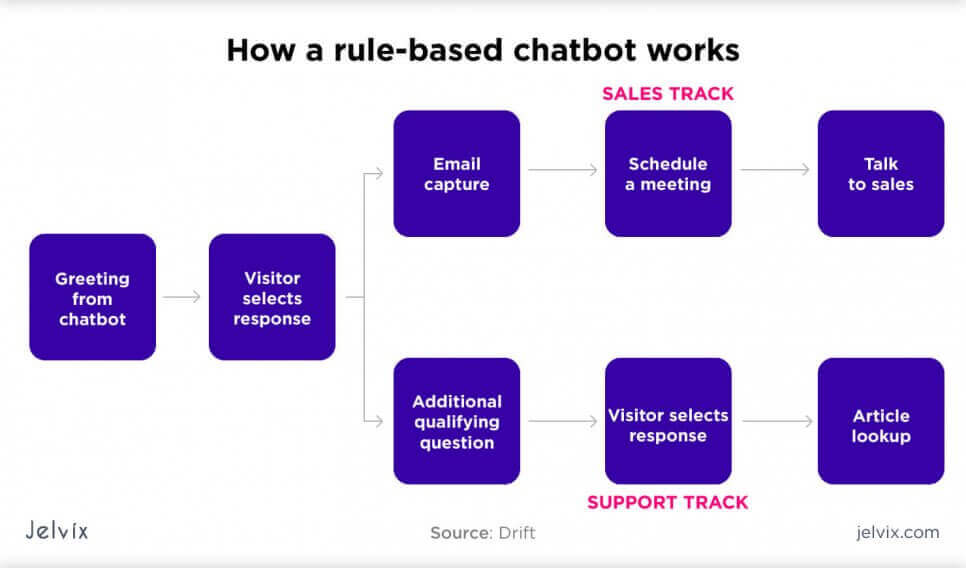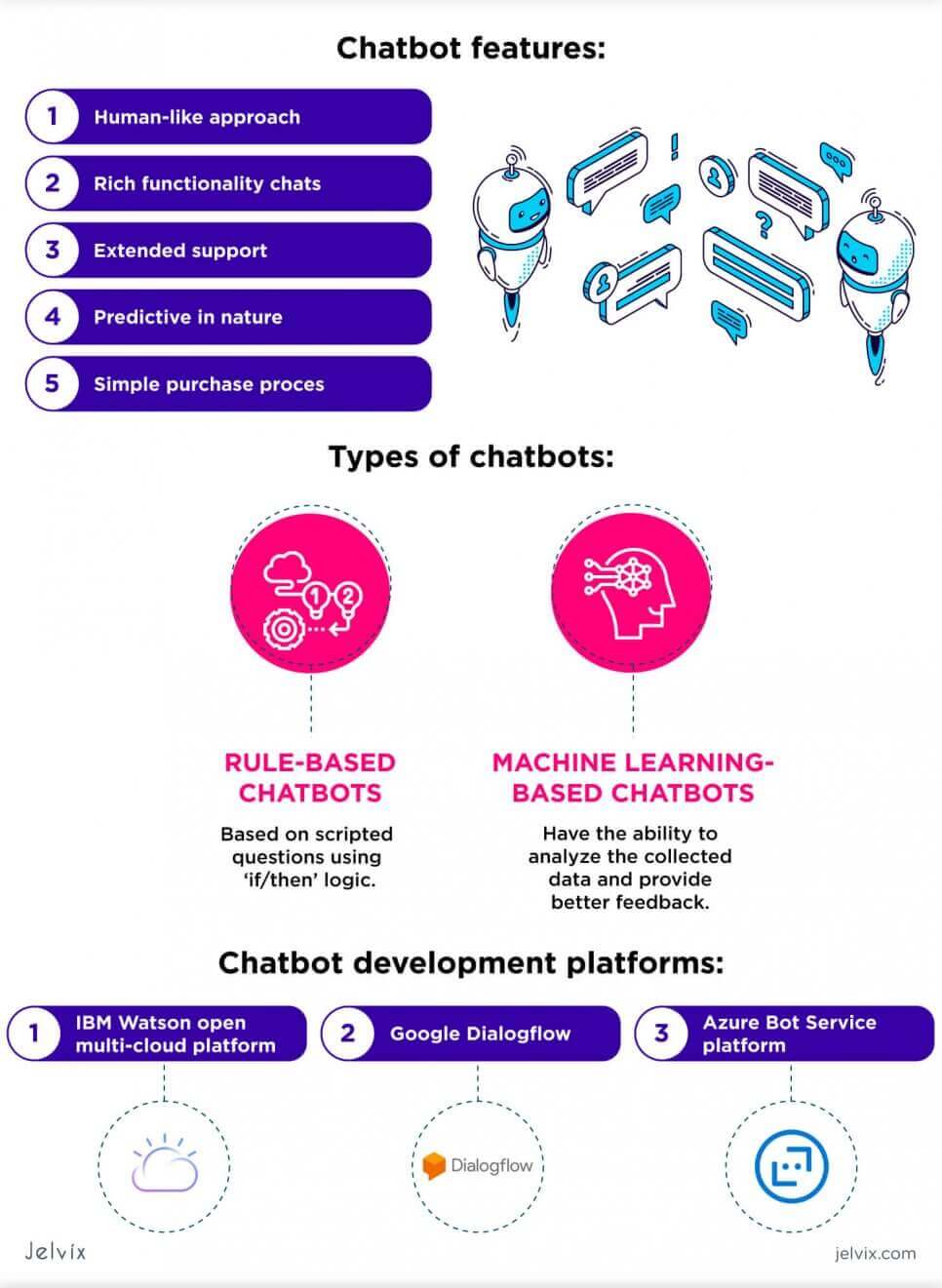The integration of chatbots into healthcare settings is becoming a common practice. By automating routine tasks, AI-driven chatbots possess the power to save 5-10% in U.S. healthcare spending.
However, estimating and budgeting for the development of a chatbot can be challenging for healthcare businesses, as costs are impacted by numerous aspects and the development process requires relevant expertise.
If you want to make informed financial decisions while developing a chatbot, this article is for you. You’ll discover the factors that impact the development costs, strategies that help optimize the price, and essential steps of the chatbot development process to follow.
Understanding Chatbot Costs in Healthcare
The cost of developing a chatbot for healthcare from scratch or integrating a ready chatbot into clinical settings can vary depending on several factors. These include the complexity of the chatbot, the platform it will be deployed on, the type of AI or machine learning capabilities required, and whether it will use pre-built services or custom development. Other considerations include the chatbot’s functionality, such as language processing abilities, integration with other systems or databases, and the level of customization needed.
Chatbot Pricing Models: Free, Professional, and Enterprise
The market offers a range of chatbot development options, from free tools to enterprise solutions, each with its own set of features and costs. Depending on your organization’s needs, you may require free solutions for simple patient queries or enterprise solutions for more complex tasks.
Free Solutions
Free chatbot development platforms are suitable for small businesses or those looking to experiment with basic chatbots. These platforms typically offer limited customization options and operate under a free model, where advanced features or higher usage limits require moving to a paid plan.
Professional Solutions
Professional chatbot solutions cater to businesses needing more personalized solutions without the high costs associated with fully custom development. These services often balance customization and cost, offering more sophisticated capabilities than free tools but at a lower price point than enterprise solutions. Pricing may be based on the complexity of the solution, the number of integrations, or a monthly chatbot subscription model.
Enterprise Solutions
Enterprise chatbot solutions are designed for large organizations requiring high levels of customization, scalability, and integration with existing systems. These solutions are the most expensive, with costs determined by the scope of the project, the technology used, and the level of support and maintenance provided.
Key Factors Influencing Chatbot Development Costs
The cost of developing a chatbot is influenced by a wide range of factors, from the initial design and functionality to ongoing maintenance and compliance requirements. By carefully considering these factors, businesses can better plan their chatbot projects and ensure a more predictable and manageable budget.
Complexity and Functionality
The cost can vary depending on whether the chatbot is simple and rule-based or uses advanced artificial intelligence (AI) for natural language processing (NLP) and machine learning (ML) capabilities. Advanced conversational abilities require more sophisticated development efforts, which increase the cost.
Technology and Platforms
The choice between using open-source frameworks (e.g., Rasa, Botpress) versus proprietary platforms (e.g., IBM Watson, Microsoft Bot Framework) also impacts the development cost. Proprietary solutions can offer out-of-the-box features but at higher licensing fees. Costs also vary depending on whether the chatbot is intended for the web, mobile apps, social media platforms (e.g., Facebook Messenger, WhatsApp), or voice assistants (e.g., Alexa, Google Assistant).
Customization and Integration
Designing a user-friendly chatbot interface and personalized user experiences requires expertise in UX/UI design, which can add to the cost. If you want to customize the chatbot’s appearance and responses to align with brand identity, this will also require additional development work.
Integration with Existing Systems
Integrating the chatbot with existing APIs, EHR in hospitals, or third-party services adds complexity and requires additional development and testing time. What’s more, ensuring the chatbot works seamlessly with existing infrastructure and meets security standards will add to the cost.
Maintenance and Updates
Ongoing technical support to fix bugs, improve performance, and update the chatbot based on user feedback will require additional costs. What’s more, you need to spend time and money on regular updates of the chatbot’s knowledge base and responses, so that it stays competitive and efficient.
Compliance and Security
Compliance with regulations, such as GDPR, HIPAA, and the EU AI Act can also influence development costs. You’ll also need to spend additional financial resources on implementing robust security measures, such as multi-factor authentication, role-based access controls, and data encryption protocols, to protect user data. The need for regular security audits and compliance checks can also contribute to ongoing expenses.
Estimating the Cost of Custom Chatbot Development: Factors to Consider
Estimating the cost of custom chatbot development involves a detailed analysis of key factors that impact the overall budget. Custom chatbot development is tailored to meet specific business needs, requiring a detailed understanding of the functionalities, technologies, and resources involved.
Business Goals
Defining clear business goals is needed for setting the complexity and functionalities of a chatbot. It’s important to evaluate if the chatbot will boost revenue, reduce costs, or enhance customer satisfaction. Higher expectations will require bigger investments in sophisticated features.
Development and Programming
The choice of programming languages, development frameworks, and tools affects the development cost. Open-source technologies may reduce software costs but require skilled developers. The degree of customization, including branding, user experience design, and personalized conversational flows, directly impacts development time and cost. The chatbot-CRM integration or connecting the chatbot to third-party services, such as payment gateways and analytics tools, adds to the complexity and cost.
Testing and Deployment
Rigorous testing across different devices and platforms ensures the chatbot performs as intended, which is critical for user adoption but adds to the development cost. Also, consider deployment costs that vary depending on the chosen platforms and the scalability requirements to support varying user loads. Post-launch costs for bug fixes and updates together with adding new features should be factored into the total cost of ownership, too.
Drivers Impacting the Development Costs
The development of a custom chatbot or integration of a ready solution into existing healthcare settings involves a range of activities from design to integration, each contributing to the overall cost and timeline of a project. Understanding the specific drivers that impact these factors is essential for businesses planning to adopt chatbot solutions.
Integration with One Chat
The time required to integrate a chatbot with a chat service (like Slack, Facebook Messenger, etc.) depends on the chatbot’s complexity and the chosen features. On average, integration efforts can take about 40 hours, with more complex integrations requiring additional time.
Communication Interface Specification
The design of the chatbot’s user interface significantly influences development time:
- A command-line user interface (CLI) approach involves text-based commands, typically requiring additional development time to implement effectively;
- Developing a chatbot that users can interact with through natural language demands more time, given the complexity of processing and understanding human language.
Business Logic
The implementation of business logic, which dictates how the chatbot processes information and makes decisions, varies in complexity:
- If the chatbot is to leverage existing web applications or APIs for a mobile app, adapting the current business logic to work with the chatbot can take 120+ hours, depending on the complexity and number of business rules;
- Developing new business logic for a chatbot, especially for those requiring detailed workflows or decision-making capabilities, starts at 160 hours and increases with the amount of logic needed.
For basic, scripted chatbots that follow predefined scenarios, the development costs can be relatively low. These bots do not require the advanced AI, NLP, or ML technologies that drive up the cost and complexity. In contrast, chatbots that use advanced AI and NLP to offer dynamic responses and learning capabilities are more expensive to develop due to the technical complexity and resources required.
Key Strategies To Optimize Chatbot Price
If you aim at leveraging the power of chatbot tech without overspending, consider optimizing the development costs. By employing strategic planning and cost-effective practices, you can create effective chatbots within a reasonable budget.
Cost-Reduction Techniques for Chatbot Development
The Jelvix team suggests that vendors and providers follow the strategies listed below to develop and deploy chatbots cost-effectively.
Leverage Open-Source Platforms and Tools
Using open-source chatbot development frameworks and tools can significantly reduce costs. These platforms often offer extensive documentation, community support, and pre-built modules that can accelerate development and reduce the need for extensive custom coding.
Prioritize Core Functionalities
Focus on developing the core functionalities that address the most immediate needs of your target users. This approach allows for the gradual expansion of the chatbot’s capabilities based on user feedback and business requirements, rather than investing in comprehensive features from the start.
Simplify the Conversation Design
Designing a chatbot with a simple and intuitive conversation flow can minimize the complexity and development costs. Avoid over-complicating the chatbot with unnecessary features or sophisticated dialogues that may not be crucial for the initial launch.
Automated Testing
Automated testing tools help streamline the process of conducting regression tests, which should be conducted every now and then. With these tools, healthcare entities can invest in the automation process once and run tests almost cost-free continuously, saving significant resources over time.
Opt for Hybrid Development Approaches
Combining rule-based systems with AI components can offer a cost-effective solution. This hybrid approach allows for handling frequently asked questions and common tasks with simple rule-based algorithms while reserving AI capabilities for more complex queries and interactions.
Outsource To Reduce Costs
Outsourcing chatbot development to agencies or freelancers with specific expertise in chatbot tech can be more cost-effective than developing in-house, especially for businesses without any experience in chatbot development.
Identifying Minimum Viable Product Features for Cost-Efficiency
Developing a Minimum Viable Product (MVP) is a strategic approach to chatbot development that focuses on launching with a minimal set of features that deliver value to the end-users.
Define the Chatbot’s Purpose
Clearly define the primary goal of the chatbot, whether it’s customer support, sales, booking, or another service. This clarity helps in prioritizing the features that are directly aligned with achieving this goal.
Conduct User Research
Conduct user research to understand the needs, preferences, and pain points of your target audience. These insights help in identifying the features that will provide immediate value to your customers.
Analyze Competitors
Look at the similar offerings in the market to identify must-have features that users expect and appreciate. This can also help in spotting opportunities to differentiate your chatbot.
Form the Product Vision
It’s crucial to develop a clear product vision, roadmap, and set of metrics to measure goal achievement. Before prioritizing features, compile them into a unified product backlog. This organized approach ensures strategic development and alignment with long-term objectives.
Prioritize Features Based on Impact and Feasibility
Evaluate potential features based on their impact on user satisfaction and business goals versus their development complexity and cost. Focus on features that offer high value with relatively low complexity.
Plan for Iterative Development
Adopt an iterative development process where you start with a basic version of the chatbot and gradually introduce new features based on user feedback and business needs. This approach allows for continuous improvement while managing development costs.
Optimize patient engagement and streamline healthcare processes with our guide. Discover how to choose the ideal healthcare chatbot.
Chatbot Development Process Explained
Creating a chatbot involves a series of strategic steps, from initial concept to final deployment, each critical to the success and effectiveness of the final product. Understanding this process can help businesses plan and execute their chatbot projects efficiently while managing expectations regarding timelines and costs.
9 Steps To Build a Chatbot: From Concept to Deployment
To make the chatbot development process more clear for vendors and providers, the Jelvix team prepared a step-by-step guide to follow.
Step 1. Define the Purpose and Objectives
Clearly define what you want your chatbot to achieve. Whether it’s improving customer service, increasing sales, or providing information, having a clear objective will guide the development process.
Step 2. Conduct User Research
Understand your audience’s needs, preferences, and pain points. This step is crucial for designing a chatbot that meets the expectations and requirements of its end-users.
Step 3. Design the Conversation Flow
Map out how interactions with the chatbot will proceed. This involves scripting dialogues, defining user intents, and determining how the chatbot will respond to various inputs.
Step 4. Choose the Right Platform
Decide on which platforms, such as Facebook Messenger, WhatsApp, or your website, your chatbot will operate. This decision will influence many aspects of development, including the choice of tools and integration capabilities.
Step 5. Select the Technology Stack
Choose the appropriate technologies based on your chatbot’s complexity and functionality, including programming languages, chatbot development frameworks, and NLP tools.
Step 6. Develop the Chatbot
With the planning in place, start the actual development of your chatbot. This includes coding, setting up NLP capabilities, and integrating with APIs and external databases if necessary.
Step 7. Test and Refine
Carefully test the chatbot to identify and fix any issues. This includes testing for understanding user queries, handling unexpected inputs, and ensuring smooth integration with other systems.
Step 8. Deploy the Chatbot
Once testing is complete and the chatbot is functioning as expected, deploy it on the chosen platform. Ensure it’s accessible to users and properly integrated with other business systems.
Step 9. Monitor and Update
After deployment, continuously monitor the chatbot’s performance and user interactions. Collect feedback to make necessary improvements and updates over time.
Cost of Developing a Chatbot from Scratch
As noted earlier in this article, the cost of developing a chatbot from scratch varies based on factors like complexity, technology stack, and whether development is done in-house or outsourced.
In-House Chatbot Development Costs
Building a chatbot in-house requires assembling a diverse team, including software developers for coding, UX/UI designers for crafting the user interface, and data scientists for chatbot training. According to estimates from the Jelvix team and worldwide recruitment firms, hiring a chatbot developer could cost around $135,000 annually, and securing a designer for the chatbot might run about $118,750 each year.
Note that you will also need effective project management to keep the development process on track and QA specialists to test the chatbot throughout the development process for possible issues.
For a basic chatbot, costs may start from $10,000 to $30,000, covering salaries, technology, and initial setup. More advanced chatbots requiring sophisticated AI and integrations with multiple systems can easily exceed $100,000. Additionally, ongoing maintenance and improvement efforts typically require a yearly budget allocation.
Outsourcing Chatbot Development Costs
Outsourcing chatbot development to a specialized agency or freelance developers can offer reduced development time and potentially lower costs compared to in-house development.
Outsourcing costs for simple chatbots can range from $2,000 to $10,000. Developing chatbots that require natural language processing, machine learning, and integration with AI services is significantly more complex and expensive. Costs can range from $10,000 to $50,000, depending on the depth of the AI capabilities and the amount of training data.
Note that all costs presented in this article are approximate. For a precise quote, we recommend contacting us to estimate the cost.
Evaluating the Cost-Benefit Ratio
Just like with any other technology investment, assessing the cost-benefit ratio is needed to determine whether chatbots are worth the financial commitment. This evaluation involves understanding the value proposition a chatbot can offer and analyzing the return on investment of its development.
Assessing the Value Proposition: Are Chatbots Worth the Investment?
To evaluate whether a chatbot is worth your investment, consider assessing the factors, such as customer service, sales, and overall efficiency of the solution.
Improved Customer Service
Chatbots can provide instant responses to customer inquiries 24/7, significantly improving customer service. By handling routine queries, chatbots free up human agents to deal with more complex issues, enhancing overall service quality.
Increased Sales and Conversion Rates
By engaging customers in real time, providing product recommendations, and facilitating transactions, chatbots can directly contribute to increased sales and conversion rates.
Enhanced Operational Efficiency
Automating repetitive tasks and processes with chatbots can lead to significant cost savings. This automation reduces the need for human intervention, lowering operational costs.
Scalability
Chatbots can handle thousands of conversations simultaneously, offering a scalable solution to customer service that can grow with the business without the need for proportional increases in support staff.
Data Collection and Insights
Chatbots can collect valuable data from interactions with customers, providing insights into customer preferences, behavior, and feedback. This data can inform business strategies and improve product or service offerings.
Analyzing the ROI of Chatbot Development Projects
To accurately analyze the ROI of chatbot development, businesses should consider both the direct and indirect costs and benefits associated with their deployment:
- Calculating costs: include initial development or acquisition costs, ongoing maintenance, updates, and any costs related to training staff to manage the chatbot;
- Measuring direct benefits: these may include reduced customer service costs, increased sales, and other measurable financial gains resulting from chatbot implementation;
- Considering indirect benefits: improved customer satisfaction, brand loyalty, and valuable customer insights can be more challenging to quantify but are crucial for long-term success;
- Comparing against alternatives: evaluate the cost and benefits of chatbots against alternative solutions, such as hiring additional staff, to assess the relative value proposition;
- Long-term perspective: consider the long-term impact of chatbots on the business, including potential for future growth and adaptability to new technologies or market changes;
- Break-even analysis: determine the point at which the benefits of the chatbot project will surpass its costs, providing a clear picture of the investment’s viability.
How Jelvix Can Assist in Medical Chatbot Development
Integrating AI-driven chatbots into healthcare settings presents a unique set of challenges and opportunities. At Jelvix, we understand that the healthcare sector requires solutions to leverage the latest in AI technology and meet the requirements for privacy, security, and patient care.
Our approach to implementing AI-driven chatbots focuses on customization, compliance, and enhancing patient experience. If you need assistance in estimating and budgeting for the development of a chatbot, contact our team. Our experts will provide a consultation based on your company’s specific needs and budget. Together, we will talk through the main points of bringing your unique chatbot to life.
Need a qualified team?
Unlock new business opportunities with the first-rate dedicated development team.



